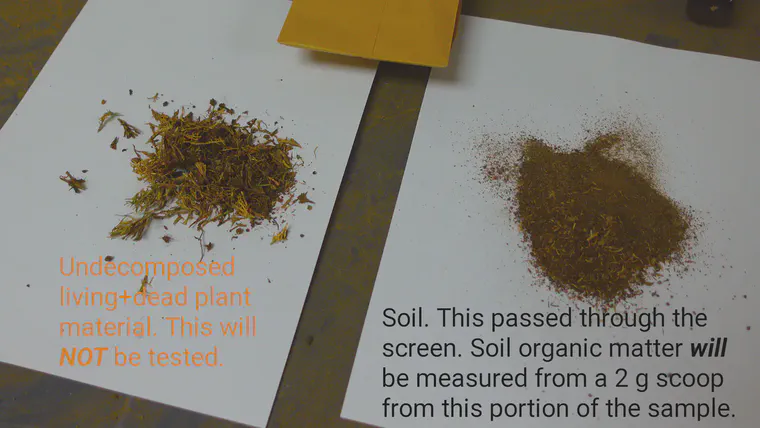Organic matter terminology in turfgrass soils
How about “soil organic matter” for the customary soil test OM with undecomposed material removed, and “total organic material” for the #OM246 type of testing that explicitly includes soil organic matter plus thatch and mat?

I have a suggestion. Turfgrass managers do a lot of work for the purpose of organic matter management. We teach seminars, or sit through seminars, about managing organic matter. When referring to organic matter, or contemplating its management, I think people in the turfgrass industry tend to lump together all the organic materials, the humus and the dead roots and the decomposing leaf sheaths and leaves and rhizomes, and the living parts of the grass plants that happen to be underground. This is all organic—it’s obviously not soil.
That’s where the confusion starts, because we send samples for testing to laboratories, and these labs use procedures to test soil organic matter. To make an accurate measurement of soil organic matter, the lab procedures require use of machines to separate the grass and thatch and roots from the soil before the soil organic matter is measured.
All those things that we try to manage in the name of organic matter management, the thatch-mat layer just beneath the turf, that material never even gets measured as part of a test for soil organic matter. This video shows what soils getting tested for soil organic matter look like before they go into the muffle furnace. You’ll notice these are soil samples—anything resembling thatch or mat has been removed.
So here’s my suggestion. Let’s use two different terms to refer to the two types of organic matter tests. For the standard test of soil organic matter, call that soil organic matter. And for the types of testing (like OM246) that explicitly include all the undecomposed living and dead plant material, call that total organic material.
If those two terms are used, they are distinctive enough to indicate what has been tested, and one can imply what type of testing method has been used. One can also easily append a specific depth to either the soil organic matter or the total organic material description.
Then soil organic matter to a 4 inch (10 cm) depth is explicitly clear. There’s no thatch measured in that, no roots, just soil. And total organic material to a 2 inch depth, that’s also explicitly clear. Using the term total organic material means the sample did not have any procedure done to separate the plant material from the soil material.
I hope this will catch on.1 I have too many discussion that go back and forth simply trying to figure out what type of organic matter measurement we are talking about. And I see the occasional test shared with me where someone thinks they are looking at total organic material, but from the values on the test, it’s apparent that they’ve actually gotten a test for soil organic matter, rather than for total organic material.
For more about this, these three posts elaborate and include photos and test results:
- A Tale of Two Tests
- Organic matter separation from turfgrass soil samples
- Two soil organic matter timelines
Here are a few definitions.
I want to use the term soil organic matter to refer to soil samples that have passed through a 2 mm sieve. By definition, this is going to be sand, silt, and clay sized material. It’s going to exclude most thatch or mat-like material, as well as roots.
I want to use the term total organic material to refer to the measurement by mass loss on ignition of organic material in a soil sample that has not passed through a sieve. This test is conducted on the sample as it is received at the laboratory, with no removal of living or dead plant material prior to testing.
From Beard, and almost identical text from the SSSA: soil organic matter is the the organic fraction of the soil, exclusive of undecayed plant and animal residues.
From Beard, thatch is an intermingled organic layer of dead and living shoots, stems, and roots of grasses that develops between the turf canopy of green vegetation and the soil surface.
From Beard, psuedothatch is the upper surface layer of a thatch composed of relatively undecomposed leaf remnants and clippings.
From Beard, mat is thatch intermixed with mineral matter that develops between the zone of green turf vegetation and the original soil surface; commonly associated with greens that have been topdressed.
From the SSSA, humus is the well decomposed, more or less stable part of the organic matter in mineral soils.
You’ll see from my previous posts on this topic that I have often used the terms “organic matter” or “soil organic matter” to refer to what I now am saying we should call “total organic material.” I’m going to try to do better about that, to be clear and more consistent in how I communicate about this. ↩︎